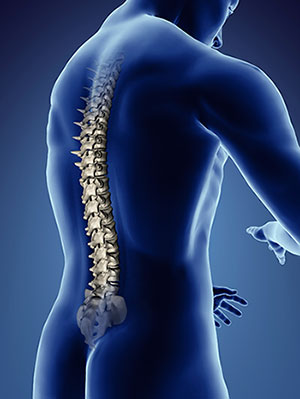Eshealthtips.com – If you’re suffering from spinal radiculopathy, myelopathy, or claudication, you may be interested in learning more about Lumbar Decompression. This type of surgery relieves pressure on the spinal cord and compressed nerve roots. But does it really work? Find out in this article. Also, learn why Lumbar Decompression is so important. Listed below are some of the advantages of this surgery.
Lumbar Decompression is a Safe and Effective Procedure
Although lumbar decompression can alleviate back pain, it’s not a cure for back pain. The risk of infection and other complications are real and are common after any surgical procedure, but they are far less serious than you may think. Most patients recover very quickly from lumbar decompression and experience significant pain relief. However, after surgery, pain and weakness may persist for months or years. Besides, blood clots can form in the area where the surgery was performed. But overall, lumbar decompression is a safe and effective procedure.
Lumbar decompression surgery is an effective treatment for lumbar stenosis, a condition in which nerves are compressed in the lower back. People who have lumbar canal stenosis may benefit from this surgery, which can help relieve symptoms such as sciatica and pins and needles. The recovery time can be weeks or months, depending on the severity of the condition. However, the surgery is worth the risk.

Because lumbar spinal decompression is so effective, it is often combined with other surgical procedures. For example, a herniated disc may occur with another disorder that also causes nerve compression, resulting in an increased risk of lumbar instability. Furthermore, patients with spondylolisthesis may require multiple-level spinal stabilizations in order to alleviate symptoms. Moreover, lumbar decompression may have an effect on the paraspinal musculature.
Recovery After Lumbar Decompression Surgery
The recovery time of a lumbar decompression surgery depends on the procedure. For instance, if you’re experiencing severe pain, it’s better to avoid heavy lifting for a couple of weeks. During this time, you should avoid lifting loads more than 5 kilograms. In addition, you should follow safe lifting practices. Bend your knees when lifting and avoid twisting when lifting. Once you’ve recovered from your lumbar decompression surgery, you can resume work, but you’re not supposed to drive for a week after the procedure. Your doctor will advise you on returning to work or to exercise.
A lumbar decompression procedure is performed to relieve pressure on the spinal cord and nerves in the lower back. Surgical removal of bone and vertebrae impinge on nearby nerves reduces pressure on the spinal cord and reduces pain. With this type of procedure, you can get back to a normal, pain-free life. If you’ve been suffering from chronic back pain and are ready for a surgical procedure to alleviate your symptoms, lumbar decompression is the procedure for you.

A lumbar decompression surgery usually involves removing a large amount of healthy spinal tissue. Often, too much tissue is removed, causing instability of the spine, and requiring hardware to stabilize it. In other cases, it may even result in fusion of the spine. This procedure uses flexible instruments to preserve two bony areas of the spine, while removing the tissue that compresses nerves. Once you’ve undergone lumbar decompression surgery, your recovery time may vary from one to two weeks.
Benefits of Physical Therapy After Surgery Recommended
Patients with spinal stenosis may also benefit from decompression surgery. This procedure aims to widen the spinal canal to relieve pressure on the affected nerves. However, it does not correct degenerative spine disease. Lumbar decompression surgery does not cure the condition; it only treats the effects of spinal stenosis. Physical therapy may also be beneficial. However, it’s important to choose the right surgery based on your individual condition and your doctor’s recommendations.
Lumbar decompression surgery is an alternative to surgery for a range of conditions. While surgery is not the answer for a specific condition, it can help alleviate pain and improve patient outcomes. The procedure is minimally invasive and is a great option for patients with lumbar spinal stenosis. It involves the use of specially designed instruments to remove a portion of the lamina and ligamentum flavum. The entire procedure takes less than an hour and can be performed in a hospital.

Patients with spinal stenosis usually undergo a series of different treatments before receiving the procedure. Patients with mild or moderate cases of LSS are generally eligible for mild procedures, while patients with severe or degenerative conditions may benefit from open decompression/fusion. To help determine if the procedure is the best option for a patient, doctors will first evaluate the patient’s overall health. It’s important to keep in mind that spinal decompression therapy is not the only treatment for back pain. Patients with facet syndrome and herniated discs may not necessarily respond to the procedure.